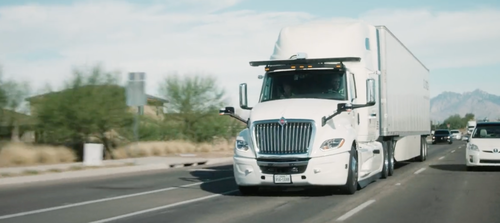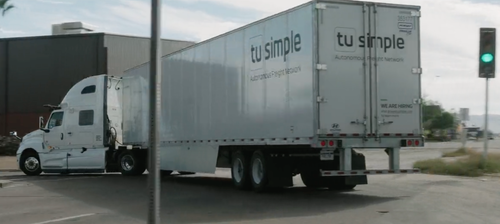Technology
July 14, 2022
Foamed Hytrel
Dupont Rolls Out Recyclable Hytrel Foam for Footwear, Furniture

DuPont Mobility & Materials announced the commercial availability of new closed-cell Hytrel foam created via a supercritical fluid (SCF) foaming process.
While a wide range of applications can benefit from the greater shock absorption and durability of new Hytrel foam, manufacturers of footwear, sporting goods, consumer goods, furniture, and wire and cable jacketing are expected to be early adopters of the new solution.
This fully recyclable material is the first foamed product in the Hytrel product family. It not only reduces environmental impact, but customers have also confirmed that it delivers up to 15 percent greater resilience and 20 percent less weight than thermoplastic urethane (TPU, E-TPU), polyurethane (PU) and ethylene vinyl acetate (EVA) foams, the company said.
“It’s no secret that brand owners such as Newton Running Company are looking for more sustainable materials and production methods to counter climate change,” said Hilary Wang, marketing manager at DuPont Mobility & Materials.
A close-up of Hytrel foam shows its closed cell structure.
These companies are also actively seeking a more sustainable process than chemical foaming, which is being restricted or even phased out in some countries, Wang noted. Unlike foamed materials that rely on chemical foaming agents, new Hytrel foam is produced using CO2 and N2 gases, which are found in the time-tested, proven SCF process, according to DuPont Mobility & Materials.
This process offers three benefits–no residues from chemical foaming agents in the final products, no volatile organic compounds (VOCs) are emitted so global warming potential is reduced, there are no odors or allergens present and the resulting foam is skin-contact compatible.
DuPont Mobility & Materials will showcase new Hytrel foam and other cutting-edge solutions and technology innovations at the upcoming K 2022 trade fair for the plastics and rubber industry. This international event, held once every three years, takes place Oct. 19-26 in Düsseldorf, Germany.
DuPont Mobility & Materials delivers a broad range of technology-based products and solutions to the automotive, electronics, industrial, consumer, medical, photovoltaic and telecom markets.
June 23, 2022
Black Mass Recycling Technology
BASF to build battery recycling facility in Brandenburg
BASFBatteriesbattery cellsBrandenburgGermanyRecyclingResourcesSchwarzheidesuppliers
BASF will build a plant for recycling black mass from batteries on an industrial scale in Schwarzheide, Brandenburg – where BASF’s pilot recycling plant is also located. Commissioning of the large plant is planned for early 2024.
The annual processing capacity is to be 15,000 tonnes – old electric car batteries and material that does not meet production specifications will be recycled. The latter can come from the immediate vicinity: As is well known, BASF is also building its German factory for cathode materials in Schwarzheide. Scrap and offcuts can therefore be reprocessed directly on site.
In the press release, the company describes the site as “ideal for the development of battery recycling activities”. Not only because of its own production on site, but “because there are many manufacturers of electric cars and cell producers in Central Europe”. The plant is expected to create about 30 jobs. The company does not specify the amount of the investment.
The so-called ‘black mass’ is produced in the first phase of battery recycling. After the mechanical treatment of the battery (i.e. dismantling and crushing), components such as plastics and aluminium can already be filtered out. What remains is the black mass, which contains large quantities of the battery’s active materials – such as lithium, nickel, cobalt and manganese. To separate this mass back into the individual materials (which are then used to produce new cathodes), water and chemicals are used in the hydrometallurgical process.
“With this investment in a commercial scale battery recycling black mass plant, we take the next step to establish the full battery recycling value chain at BASF. This allows us to optimize the end-to-end recycling process and reduce the CO2 footprint,” says Peter Schuhmacher, head of BASF’s Catalysts division. “The closed loop from end-of-life batteries to CAM for new batteries, supports our customers along the entire battery value chain, reduces the dependency from mined raw materials and enables a circular economy.”
The groundbreaking for cathode material production in Schwarzheide took place in November 2020. About a month later, the group confirmed it would also build the recycling pilot plant on site. At the pilot plant, which is scheduled to come on stream this year, BASF aims to optimise operating procedures to achieve higher recovery of lithium, nickel, cobalt and manganese from spent lithium-ion batteries.
https://www.electrive.com/2022/06/21/basf-to-build-battery-recycling-facility-in-brandenburg/
June 23, 2022
Black Mass Recycling Technology
BASF to build battery recycling facility in Brandenburg
BASFBatteriesbattery cellsBrandenburgGermanyRecyclingResourcesSchwarzheidesuppliers
BASF will build a plant for recycling black mass from batteries on an industrial scale in Schwarzheide, Brandenburg – where BASF’s pilot recycling plant is also located. Commissioning of the large plant is planned for early 2024.
The annual processing capacity is to be 15,000 tonnes – old electric car batteries and material that does not meet production specifications will be recycled. The latter can come from the immediate vicinity: As is well known, BASF is also building its German factory for cathode materials in Schwarzheide. Scrap and offcuts can therefore be reprocessed directly on site.
In the press release, the company describes the site as “ideal for the development of battery recycling activities”. Not only because of its own production on site, but “because there are many manufacturers of electric cars and cell producers in Central Europe”. The plant is expected to create about 30 jobs. The company does not specify the amount of the investment.
The so-called ‘black mass’ is produced in the first phase of battery recycling. After the mechanical treatment of the battery (i.e. dismantling and crushing), components such as plastics and aluminium can already be filtered out. What remains is the black mass, which contains large quantities of the battery’s active materials – such as lithium, nickel, cobalt and manganese. To separate this mass back into the individual materials (which are then used to produce new cathodes), water and chemicals are used in the hydrometallurgical process.
“With this investment in a commercial scale battery recycling black mass plant, we take the next step to establish the full battery recycling value chain at BASF. This allows us to optimize the end-to-end recycling process and reduce the CO2 footprint,” says Peter Schuhmacher, head of BASF’s Catalysts division. “The closed loop from end-of-life batteries to CAM for new batteries, supports our customers along the entire battery value chain, reduces the dependency from mined raw materials and enables a circular economy.”
The groundbreaking for cathode material production in Schwarzheide took place in November 2020. About a month later, the group confirmed it would also build the recycling pilot plant on site. At the pilot plant, which is scheduled to come on stream this year, BASF aims to optimise operating procedures to achieve higher recovery of lithium, nickel, cobalt and manganese from spent lithium-ion batteries.
https://www.electrive.com/2022/06/21/basf-to-build-battery-recycling-facility-in-brandenburg/
December 29, 2021
Fully-Autonomous Truck
First-Ever Fully-Autonomous Semi-Truck With No-Human On Board Traverses Arizona Highway
by Tyler DurdenWednesday, Dec 29, 2021 – 03:05 PM
Hardly a day goes by without some truck drivers thinking their days are numbered as AI, machine learning, and robotics could soon take their jobs.
In an industry that moves over 70% of U.S. freight by weight and labor and fuel costs are becoming more expensive, transportation companies are itching to swap human drivers for robot ones.
The latest example that automated semi-trucks could be available for commercial use in the next few years was the recent test by San Diego-based TuSimple.

According to a TuSimple press release, the company tested a class 8 vehicle (otherwise known as a trailer tractor) on a public road without human intervention. The nighttime test was conducted on Dec. 22 on an 80 mile stretch of highway between Tucson, Arizona, and Phoenix.
TuSimple “successfully completed the world’s first fully autonomous semi-truck run on open public roads without a human in the vehicle and without human intervention,” the press release said.
The one-hour and 20-minute drive is the first time a class 8 autonomous truck has operated on open public roads without a human in the vehicle and without human intervention and is part of an ongoing test program that will continue into 2022.
The test was performed in close collaboration with the Arizona Department of Transportation and law enforcement. The autonomous driving test was 100% operated by TuSimple’s ADS without a human on-board, without remote human control of the vehicle, and without traffic intervention. – TuSimple
TuSimple’s Autonomous Driving System can navigate streets, read traffic signals, maneuver on and off highways, and even change lanes while interacting with other vehicles.

Over the years, we’ve shown readers there is no shortage of reports (read: here & here) suggesting that robots can potentially displace jobs. The signs we see today, focusing on transportation, are that automated trucks could be maneuvering roads and highways by the end of the decade, perhaps as early as 2027. With that being said, all those newly minted drivers who are taking advantage of snarled supply chains might want to come up with a backup plan once automation begins to displace drivers.
December 29, 2021
Fully-Autonomous Truck
First-Ever Fully-Autonomous Semi-Truck With No-Human On Board Traverses Arizona Highway
by Tyler DurdenWednesday, Dec 29, 2021 – 03:05 PM
Hardly a day goes by without some truck drivers thinking their days are numbered as AI, machine learning, and robotics could soon take their jobs.
In an industry that moves over 70% of U.S. freight by weight and labor and fuel costs are becoming more expensive, transportation companies are itching to swap human drivers for robot ones.
The latest example that automated semi-trucks could be available for commercial use in the next few years was the recent test by San Diego-based TuSimple.

According to a TuSimple press release, the company tested a class 8 vehicle (otherwise known as a trailer tractor) on a public road without human intervention. The nighttime test was conducted on Dec. 22 on an 80 mile stretch of highway between Tucson, Arizona, and Phoenix.
TuSimple “successfully completed the world’s first fully autonomous semi-truck run on open public roads without a human in the vehicle and without human intervention,” the press release said.
The one-hour and 20-minute drive is the first time a class 8 autonomous truck has operated on open public roads without a human in the vehicle and without human intervention and is part of an ongoing test program that will continue into 2022.
The test was performed in close collaboration with the Arizona Department of Transportation and law enforcement. The autonomous driving test was 100% operated by TuSimple’s ADS without a human on-board, without remote human control of the vehicle, and without traffic intervention. – TuSimple
TuSimple’s Autonomous Driving System can navigate streets, read traffic signals, maneuver on and off highways, and even change lanes while interacting with other vehicles.

Over the years, we’ve shown readers there is no shortage of reports (read: here & here) suggesting that robots can potentially displace jobs. The signs we see today, focusing on transportation, are that automated trucks could be maneuvering roads and highways by the end of the decade, perhaps as early as 2027. With that being said, all those newly minted drivers who are taking advantage of snarled supply chains might want to come up with a backup plan once automation begins to displace drivers.